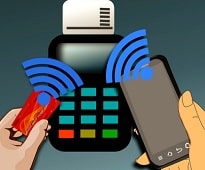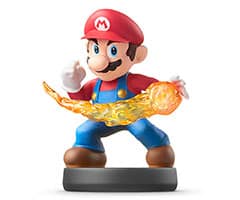 NFC is an acronym that refers to the English expression "Near field communication" , which can be translated into Spanish as "Near field communication" . This is the name given to a wireless (wireless), high-frequency communication technology with a limited range.
NFC is an acronym that refers to the English expression "Near field communication" , which can be translated into Spanish as "Near field communication" . This is the name given to a wireless (wireless), high-frequency communication technology with a limited range.
NFC technology is used to exchange data between cell phones (mobile phones) or other devices. Its standards are defined by a forum founded by the companies Sony , Philips and Nokia in 2004 and which currently has more than 170 members.
NFC enables reading-writing in both directions. This means that the devices can emit and receive signals simultaneously. Communication is established through induction in a magnetic field.
NFC operation can be active (if both devices produce the electromagnetic field for data transmission) or passive (a single device is responsible for generating the field , while the other takes advantage of charge modulation).
Communication is established as a dialogue: one device is the "initiator" and the other, the "destination" . The devices must be located no more than 10 centimeters apart and the link takes about 200 microseconds to achieve. It should be noted that the frequency used by NFC is 13.56 MHz .
It is important to understand that NFC is a technology characterized by a series of limitations that do not seem to be in accordance with the time in which it was created. For example, the short distance at which the two terminals can be located seems absurd if we compare it with that offered by mobile phone antennas, and the little storage space for data related specifically to NFC is insignificant compared to that of a card. microSD. However, these are features that have been intentionally designed to enhance security when carrying out money transfers or operations with private information.
 Let's think about payments by card or mobile phone through NFC, an activity that is everyday in many cities today. If the range of this communication protocol were like that of a Wi-Fi antenna, for example, then numerous robberies would take place every day in shopping centers, since thieves could comfortably position themselves several meters from their victims and carry out everything type of purchases with their credit cards or their phones.
Let's think about payments by card or mobile phone through NFC, an activity that is everyday in many cities today. If the range of this communication protocol were like that of a Wi-Fi antenna, for example, then numerous robberies would take place every day in shopping centers, since thieves could comfortably position themselves several meters from their victims and carry out everything type of purchases with their credit cards or their phones.
Beyond the transfer of data between two phones, NFC allows many other actions . Accessing a car by holding the phone close to the door; identify yourself in a place; read a sign; or even making a payment are some of the possibilities that this technology offers.
The Japanese company Nintendo , considered one of the pioneers and most important in the video game industry, launched in 2014 a communications and storage protocol called Amiibo , based on NFC communications technology, to transmit data between some of its consoles. and an extensive series of toys that it began to market simultaneously.
This same name is what these toys receive, which are usually small statuettes of the most relevant characters from the company's video games . First of all, the Amiibo must be registered on the console(s) where it will be used; In this way, it is possible to assign it a name that identifies it and allows it to be associated with the different games with which it is compatible. Among the possibilities offered by this product line is the storage of certain characters for use on more than one console, the unlocking of special content (both characters and clothing and accessories) and the leveling up of certain characters.
